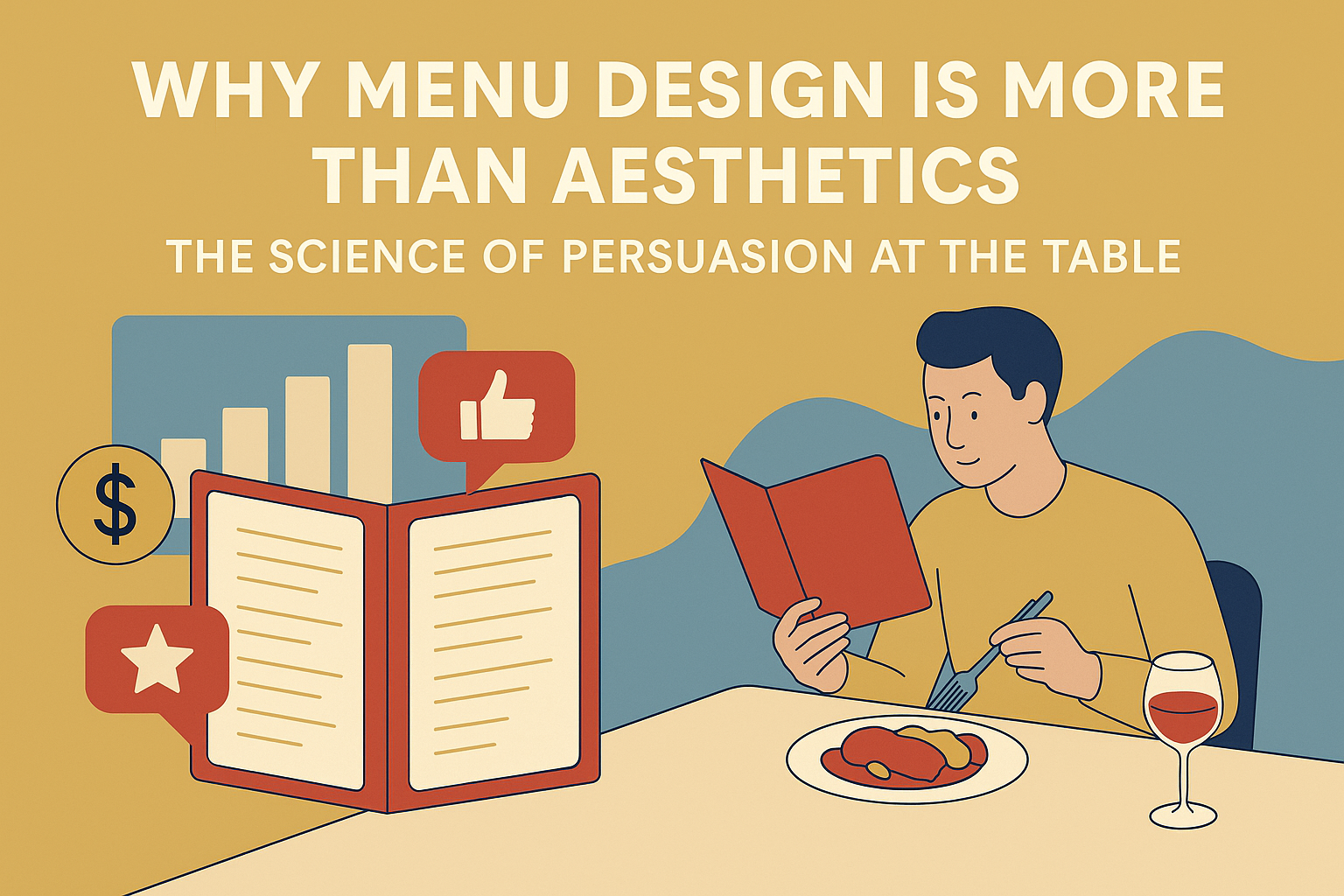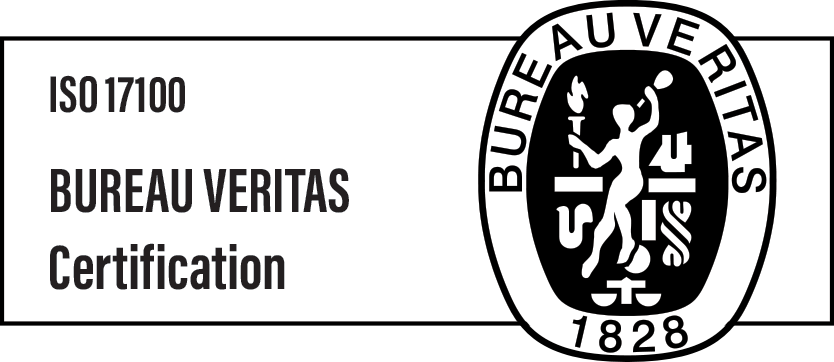Why menu design is more than aesthetics: The science of persuasion at the table

Design that feeds decisions
Did you know that menu design influences what people order more than taste?
Many restaurant owners focus on how dishes look and taste. But what’s often overlooked is how much the design of a menu impacts customer choices. Fonts, layout, color, and language all shape what ends up on the plate. For localization professionals and LSP clients in the hospitality sector, this matters more than ever. It’s not just about translating food names. It’s about adapting persuasive design elements so they work across languages and cultures.
Multilingual menu design isn’t only about looks—it’s about psychology. The right layout can guide diners toward high-margin dishes. The right words can make a simple meal sound unforgettable. That’s why multilingual menu content needs more than literal translation. It needs localization that respects the science behind customer behavior.
This article explores how smart menu design shapes decisions and how LSPs can support global clients with more than just language accuracy. We’ll dive into how visual design guides orders, and how powerful copywriting—when adapted correctly—can drive revenue across markets.

The role of design in dining decisions
The role of design in dining decisions
Design isn’t just decoration on a menu—it’s a silent salesperson. Fonts, layout, and colors all influence how diners read and what they choose. That’s why menu localization must go beyond translating dish names. It needs to preserve or adapt design elements that affect behavior.
Fonts set the tone. A clean serif font may suggest a fine dining experience. A playful handwritten font may imply casual or kid-friendly options. If your localization changes the language but not the font choice, the tone may feel off in a different cultural setting.
Color psychology is also key. Warm tones like red and orange can stimulate appetite. Blue, on the other hand, may reduce it. If your client’s visual palette works well in one culture, it may need adjustments in another. For example, red can signify luck in China but danger in some Western contexts.
Menu layout also drives sales. Items placed in the top-right corner often get the most attention. High-margin dishes are typically placed here for maximum visibility. But what happens when text expands or contracts in translation? If item positions shift, the design’s persuasive power might be lost. That’s why localized menus must consider both space and reading flow.
For LSPs, supporting multilingual menu design means thinking like a UX designer, not just a linguist. Understanding these visual triggers helps your clients create menus that convert—no matter the market.

The power of copywriting
The power of copywriting
Words do more than describe food—they sell it. A dish called “grilled chicken” sounds plain. Call it “chargrilled free-range chicken with fresh herbs,” and suddenly, it’s appealing. This is the power of menu copywriting. And when menus go multilingual, this power must be preserved through careful adaptation, not just translation.
Descriptive language taps into emotion and appetite. Words like “crispy,” “tender,” or “homemade” evoke textures, smells, and comfort. But those words don’t always carry the same meaning or appeal in another language. “Crispy” might suggest freshness in English, but in another culture, the same word might imply overcooked or dry. That’s why localized copy needs to be culturally aligned, not just accurate.
Storytelling also plays a role. Menus that share the origin of a dish or highlight ingredients from local farms build emotional connections. In translation, these stories often get shortened or lost. For LSPs, preserving—or recreating—these stories can make a big impact. It turns a functional translation into a persuasive customer experience.
To do this well, translators need creativity and cultural insight. Adapting menu language means understanding food culture, customer expectations, and brand tone. For clients in hospitality, this kind of support helps their menus not just communicate, but sell.

Cultural and multilingual considerations
Cultural and multilingual considerations
Multilingual menu design isn’t just about translating words—it’s about understanding what those words mean to different people. A phrase that sounds delicious in one language might sound bland or even unappetizing in another. That’s why localization must go deeper than direct translation. It must reflect local tastes, norms, and sensitivities.
Wording choices matter. In English, words like “rich,” “decadent,” or “indulgent” can sell desserts. In some cultures, however, those same words might suggest something too heavy or unhealthy. Even ingredient names can be tricky. A common item in one country might be unknown—or unappealing—in another. Localization ensures that dish names and descriptions feel familiar and inviting, not strange or confusing.
Cultural missteps can hurt both the customer experience and the brand’s image. References to alcohol, pork, or religious holidays must be handled with care in certain regions. Menu imagery and colors can also carry different meanings depending on the market. That’s why culturally aware adaptation is essential.
LSPs can add real value here by advising on both language and culture. A strong multilingual menu isn’t just readable—it’s relatable. When the tone, terms, and layout all feel right to the diner, the restaurant stands out for the right reasons.

The ROI of thoughtful menu design
The ROI of thoughtful menu design
Smart menu design does more than guide choices—it increases revenue. When done well, it encourages diners to choose premium options, order more items, and feel good about what they select. And that starts with persuasive, well-localized content.
High-margin dishes deserve spotlight placement and rich descriptions. A good multilingual menu design keeps those features intact, even when translated into multiple languages. If layout or language isn’t adapted correctly, the chance to upsell can vanish. By contrast, a well-localized menu keeps the strategy working in every market.
Thoughtful design also enhances the overall dining experience. When guests easily understand the menu and feel enticed by the options, they’re more likely to return. Loyalty grows not just from good food, but from the full experience—including how the menu feels. A smooth ordering process builds trust, and trust builds long-term customer value.
For LSP clients in hospitality, these are measurable gains. Better customer satisfaction, higher check sizes, and repeat visits all stem from better communication. That makes multilingual menu design not just a creative service—but a business asset.

Menu design is marketing in disguise
Menu design is marketing in disguise
Menu design isn’t just about looks. It’s about how people think, choose, and feel. Every font, word, and layout decision influences what ends up on the table.
For restaurants expanding into new markets, thoughtful localization is key. It’s not enough to translate. The menu needs to feel native—to the language, to the culture, and to the experience.
For LSPs, this is an opportunity to do more than translate. It’s a chance to shape customer behavior, support brand goals, and help clients turn every menu into a powerful tool for persuasion.
In the end, good menu design sells. Great multilingual menu design sells across borders.

